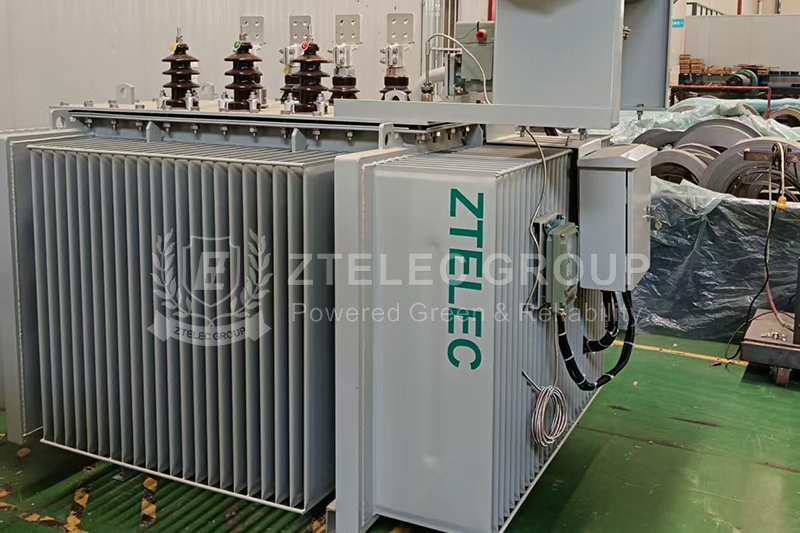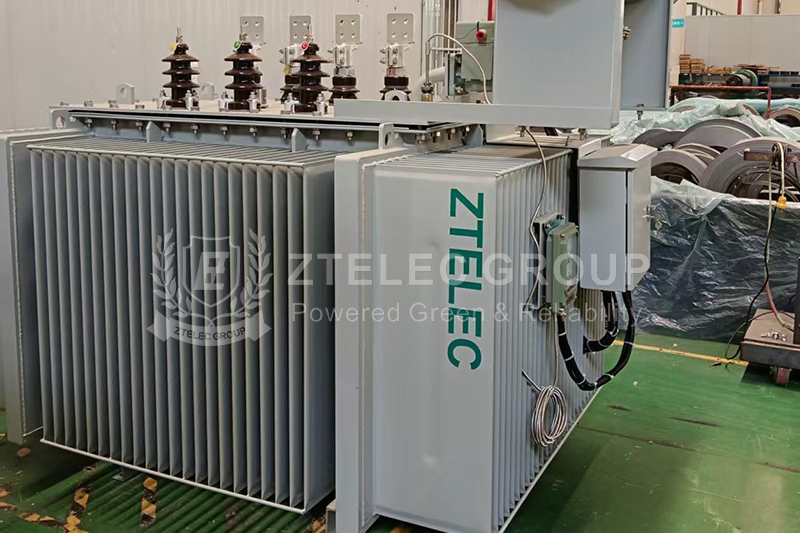Why Are Oil-Immersed Transformers Widely Used? Advantages, Disadvantages & Uses
Oil-immersed transformers play a critical role in modern power transmission and distribution systems. As one of the most commonly used transformer types, they are indispensable for maintaining voltage stability and ensuring power supply efficiency. So, why are oil-immersed transformers widely used across various industries and power grids? Let’s explore their advantages, disadvantages, and applications in detail.

Core Advantages of Oil-Immersed Transformers
Efficient Heat Dissipation
Oil-immersed transformers use insulating oil as both a cooling and insulating medium. Heat is dissipated either through natural convection or by forced circulation using oil pumps and fans. This superior heat dissipation makes them ideal for high-load and large-capacity operations, ensuring stable performance in power plants and industrial facilities.
Reliable Insulation Performance
The insulating oil provides excellent electrical insulation, effectively preventing arcing and short circuits. This makes oil-immersed transformers ideal for high-voltage environments like substations and power grids, where safety and stability are critical.
Cost-Effective Solution
Compared to dry-type transformers, oil-immersed transformers are more affordable at the same capacity. Their lower cost makes them a preferred choice in large-scale infrastructure and energy projects where budget considerations are crucial, without compromising on performance.
Strong Overload Capacity
The large thermal mass of the oil slows down temperature rise during short-term overloads, making oil-immersed transformers suitable for environments with fluctuating loads. This capability enhances system reliability in heavy-duty industrial applications.
Limitations of Oil-Immersed Transformers
Fire Hazard
The flammable nature of insulating oil increases fire risk. Therefore, installations must follow strict fire safety standards and include protective infrastructure like fire walls and oil containment pits.
Bulky Size and Heavy Weight
Due to oil tanks and cooling systems, oil-immersed transformers are larger and heavier than other types, limiting their use in compact or vertical installations like high-rise buildings.
Environmental Risks
Oil leaks can cause soil and water pollution. To mitigate this, robust sealing and waste oil recovery systems are essential, especially in eco-sensitive areas.
Reduced Efficiency in Low Temperatures
Cold environments increase oil viscosity, reducing flow and heat dissipation. In such cases, special insulating oils like silicone oil are required, increasing operational complexity and cost.

Typical Applications of Oil-Immersed Transformers
Power Systems
Used in power generation and transmission networks, oil-immersed transformers handle voltage step-up and step-down in plants and substations. Their stable performance supports efficient long-distance transmission and safe power distribution.
Industrial Applications
Industries such as steel and chemical manufacturing demand reliable, high-load power supply. Oil-immersed transformers meet these needs with efficient cooling and strong overload capabilities, supporting continuous production cycles.
Infrastructure Projects
In urban and rural grid upgrades, oil-immersed transformers serve as key distribution units. They convert high-voltage electricity into usable voltage levels for homes and businesses, ensuring reliable energy access.
Outdoor and Special Installations
For outdoor uses like box-type substations, oil-immersed transformers offer better moisture resistance and environmental adaptability, making them suitable for humid or variable weather conditions.
Oil-immersed transformers remain a widely used and trusted solution in power systems thanks to their excellent heat dissipation, reliability, and cost-effectiveness. While their limitations—such as fire risk and environmental concerns—should be considered, their advantages make them ideal for many medium and high voltage applications. For critical applications like subways and data centers, dry-type or gas-insulated transformers may be preferred. Ultimately, the choice of transformer should align with specific operational, spatial, and safety needs.
Comparison: Oil-Immersed vs Dry-Type Transformers
| Feature | Oil-Immersed Transformer | Dry-Type Transformer |
|---|---|---|
| Advantages | High capacity, superior cooling efficiency, cost-effective for large operations | Safe for indoor use, environmentally friendly, low maintenance, compact |
| Disadvantages | Fire hazard, regular maintenance, potential oil leaks | Higher initial cost, limited capacity |
- more+releated article
- 2025-10-21Application of K Factor Transformer
- 2025-10-21Detailed explanation about transformer model w
- 2025-10-2010kV Oil-Immersed Transformer Safety: Lightnin
- 2025-10-20What are The Advantages of Phenolic Cotton Clo
- 2025-10-17Are Three-Phase Isolation Dry-Type Transformer
- 2025-10-17G10 Epoxy Sheet: Choosing the Right Specificat
- 2025-10-1610kV Oil-Immersed Transformer Operation Inspec
- 2025-10-163240-B Epoxy Phenolic Glass Fiber Cloth Lamina
- 2025-10-15G10 Epoxy Sheet: The Preferred Insulation Mate
- 2025-10-15Analysis of Energy-Saving and Noise Control Te





